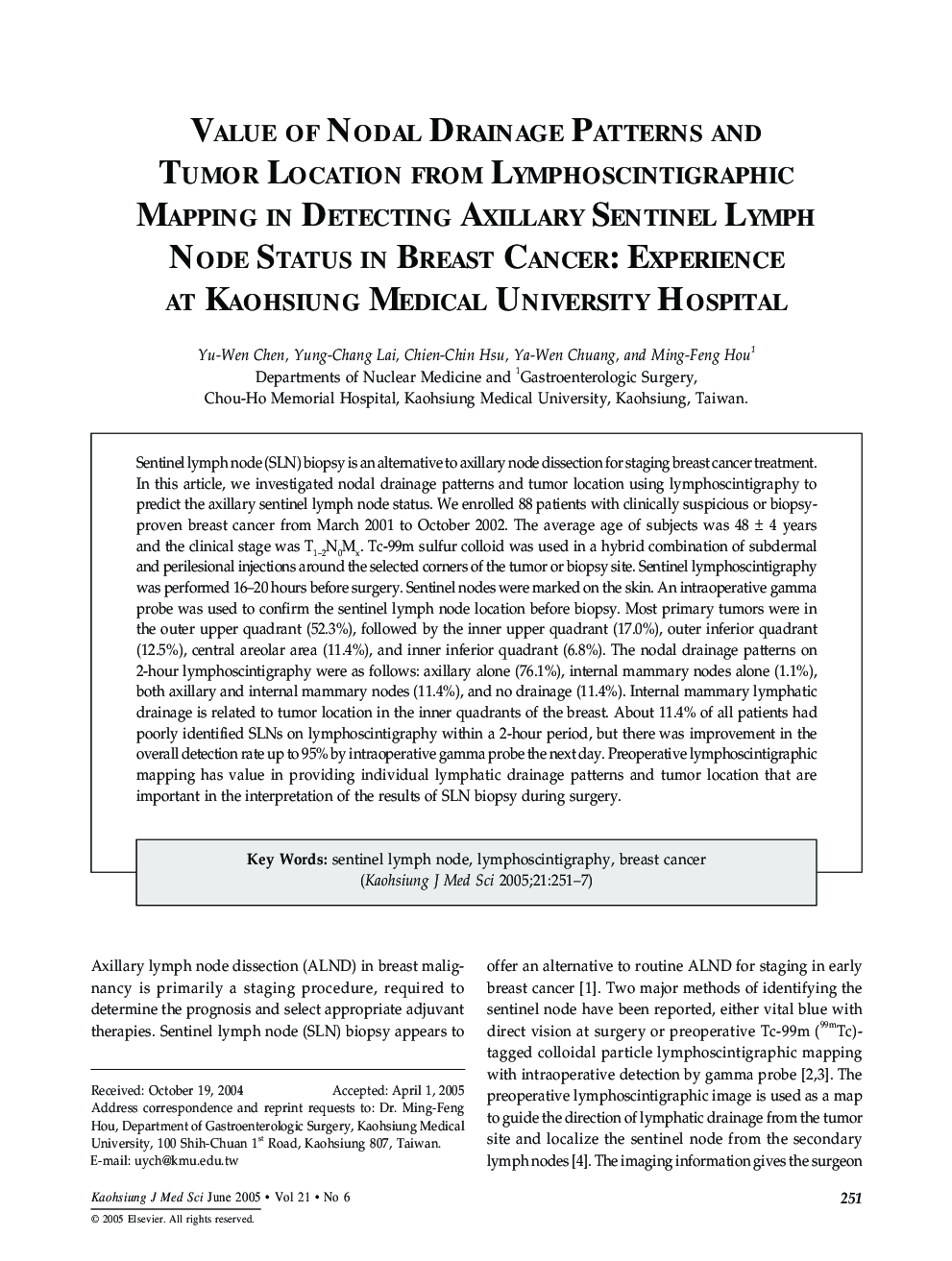| Article ID | Journal | Published Year | Pages | File Type |
|---|---|---|---|---|
| 10046111 | The Kaohsiung Journal of Medical Sciences | 2005 | 7 Pages |
Abstract
Sentinel lymph node (SLN) biopsy is an alternative to axillary node dissection for staging breast cancer treatment. In this article, we investigated nodal drainage patterns and tumor location using lymphoscintigraphy to predict the axillary sentinel lymph node status. We enrolled 88 patients with clinically suspicious or biopsy-proven breast cancer from March 2001 to October 2002. The average age of subjects was 48 ± 4 years and the clinical stage was T1-2N0Mx. Tc-99m sulfur colloid was used in a hybrid combination of subdermal and perilesional injections around the selected corners of the tumor or biopsy site. Sentinel lymphoscintigraphy was performed 16-20 hours before surgery. Sentinel nodes were marked on the skin. An intraoperative gamma probe was used to confirm the sentinel lymph node location before biopsy. Most primary tumors were in the outer upper quadrant (52.3%), followed by the inner upper quadrant (17.0%), outer inferior quadrant (12.5%), central areolar area (11.4%), and inner inferior quadrant (6.8%). The nodal drainage patterns on 2-hour lymphoscintigraphy were as follows: axillary alone (76.1%), internal mammary nodes alone (1.1%), both axillary and internal mammary nodes (11.4%), and no drainage (11.4%). Internal mammary lymphatic drainage is related to tumor location in the inner quadrants of the breast. About 11.4% of all patients had poorly identified SLNs on lymphoscintigraphy within a 2-hour period, but there was improvement in the overall detection rate up to 95% by intraoperative gamma probe the next day. Preoperative lymphoscintigraphic mapping has value in providing individual lymphatic drainage patterns and tumor location that are important in the interpretation of the results of SLN biopsy during surgery.
Related Topics
Health Sciences
Medicine and Dentistry
Medicine and Dentistry (General)
Authors
Yu-Wen Chen, Yung-Chang Lai, Chien-Chin Hsu, Ya-Wen Chuang, Ming-Feng Hou,
